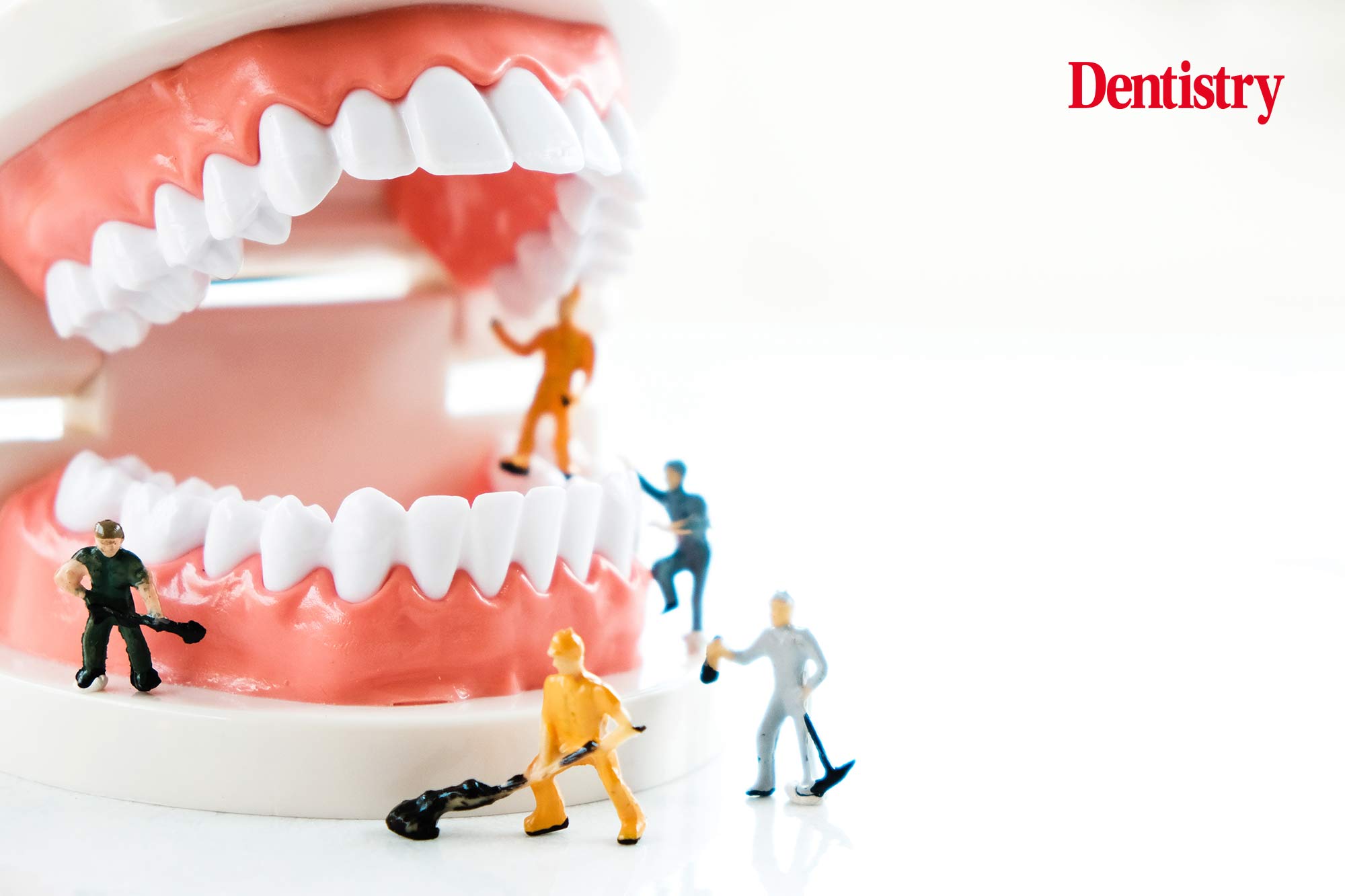 Is this goodbye to toothbrushes? Research shows that shapeshifting microrobots can clean and floss teeth.
Is this goodbye to toothbrushes? Research shows that shapeshifting microrobots can clean and floss teeth.
Researchers at the University of Pennsylvania have developed a hands-free system, which could remove plaque and caries-causing bacteria from teeth.
The technology was created with iron oxide nanoparticles which have catalytic and magnetic activity. This meant the researchers could control their motion and arrangement using a magnetic field.
As a result, researchers could turn them into bristle-like structures that brush away plaque, as well as long strings that clean between teeth like floss.
Customisable technology
Edward Steager is a senior research investigator at the University of Pennsylvania’s school of engineering. He commented: ‘Nanoparticles can be shaped and controlled with magnetic fields in surprising ways.
‘We form bristles that can extend, sweep, and even transfer back and forth across a space, much like flossing.
‘The way it works is similar to how a robotic arm might reach out and clean a surface. The system can be programmed to do the nanoparticle assembly and motion control automatically.’
In addition, the researchers could use the magnetic field to finely tune the bristle length stiffness. This customisable technology has the ability to prevent tooth decay and protect gums. This is because bristles can be made thick enough to brush away bacteria, and thin enough to prevent damage to the gums.
Consequently, the nature of this system means users could personalise the technology to suit their needs.
Dentistry’s top stories
- Dentists call for swift action on sugar-filled baby pouches
- Sara Hurley CDO confirms new targets for NHS dentistry
- Dentists write open plea to new Health Secretary Steve Barclay MP
- GDC opens consultation on three-year strategic plan
- Associates beware – the changing HMRC guidance and what this means.
Mundane chore
The purpose of this proof-of-concept study was to develop technology to perform the mundane, yet critical, chore of brushing and flossing.
Due to the study’s successful results, the researchers are looking to develop this technology into a real product. As such, they are looking into mouth-fitting devices that can deliver the microrobots.
The researchers believe this hands-free system could be ground-breaking for those who can’t independently brush or floss, or have a hard time brushing their teeth.
Hyun (Michel) Koo is a professor of orthodontics at the University of Pennsylvania’s school of dental medicine. He stated: ‘Routine oral care is cumbersome and can pose challenges for many people, especially those who have a hard time cleaning their teeth.
‘You have to brush your teeth, then floss your teeth, then rinse your mouth; it’s a manual, multi-step process. The big innovation here is that the robotics system can do all three in a single, hands-free, automated way.’
He also added: ‘We have this technology that’s as or more effective than brushing and flossing your teeth but doesn’t require manual dexterity. We’d love to see this helping the geriatric population and people with disabilities.
‘We believe it will disrupt current modalities and majorly advance oral health care.’
The end of toothbrushes?
While it optimises brushing and flossing, the shapeshifting robotic microswarm mimics the toothbrush’s fundamental format.
‘The design of the toothbrush has remained relatively unchanged for millennia,’ says Koo. ‘It’s a technology that has not been disrupted in decades.’
He also added: ‘It doesn’t matter if you have straight teeth or misaligned teeth, it will adapt to different surfaces.
‘The system can adjust to all the nooks and crannies in the oral cavity.’
Follow Dentistry.co.uk on Instagram to keep up with all the latest dental news and trends.


